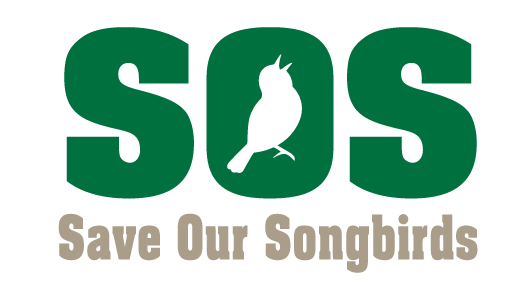How to Attract and Feed Birds Around Your Home
We all love having beautiful flowers, shrubs and trees around our homes but many of the ornamental plants we’ve selected come from Asia, Europe and South America and provide little or no food for Wisconsin birds.
They’re good eye-candy but a food desert -- especially when compared to the buffet served up by many plants naturally occurring in Wisconsin.
To Feed the Birds, First Feed The Bugs
Every plant protects its leaves with chemicals, and only leaf-eating insect species that have evolved over time with that plant have developed the adaptations to digest the chemicals in their hosts’ leaves.
So when our native insects encounter plants from another country, chances are they’re not able to eat them. That’s a big problem for insects, but also for every species up the food chain that relies on insects. Including birds: 96% of land-based birds feed insects to their young, so providing them such food – and lots of it -- is critical to sustaining Wisconsin’s bird populations.
Black-capped Chickadee parent feeds a young bird a caterpillar. Photo: Ryan Brady
Well-known University of Delaware entomologist and wildlife ecologist Douglas W. Tallamy memorably talks about the importance of caterpillars in his guest column in The New York Times, The Chickadee’s Guide to Gardening.
“Watch what the chickadees bring to the nest: mostly caterpillars. Both parents take turns feeding the chicks, enabling them to bring a caterpillar to the nest once every three minutes. And they do this from 6 a.m. until 8 p.m. for each of the 16 to 18 days it takes the chicks to fledge. That’s a total of 350 to 570 caterpillars every day, depending on how many chicks they have. So, an incredible 6,000 to 9,000 caterpillars are required to make one clutch of chickadees. And chickadees are tiny birds: just a third of an ounce.”
Tallamy compares the caterpillar production from a young white oak tree in his yard, a species native to his area, with a Bradford pear tree in his neighbor’s yard. The Bradford pear is a variety of pear tree native to Korea and China that was introduced into western horticulture in the early 1900s. His results? The oak tree yielded 410 caterpillars comprising 19 different species and the Bradford pear produced only one caterpillar -- an inchworm.
How to be part of this “grassroots solution to the extinction crisis”
The good news is we can add a few native plants in with our ornamental plants to expand our menu for birds. There are many native plant options that are attractive, hardy, easy to care for and will expand your menu for birds. Native plants like oaks, willows, serviceberries, sunflowers, coneflowers and more can support dozens to hundreds of caterpillar species, i.e. bird food.
Many native plants also provide berries, seeds, nectar and shelter for birds.
We suggest six good starter plants on our “Add plants for birds” webpage and link to more extensive plant lists developed by other bird conservation or native plant restoration organizations.
Increasing the percentage of native plants in suburbia is “a grassroots solution to the extinction crisis,” Tallamy says.
Our home landscapes can and must play a bigger role in providing food for birds and other wildlife because nature is running out of room. 54% of land in the lower 48 states is urban, suburban, or crisscrossed with pipes, power lines and other infrastructure, while 41% is used for some form of agriculture, he says.
“We can each make a measurable difference almost immediately by planting a native nearby. As gardeners and stewards of our land, we have never been so empowered – and the ecological stakes have never been so high.”
Read more, watch videos and listen to podcasts featuring Douglas Tallamy on native plants and Homegrown National Park, his effort to build an organization to bring more native plants back to suburban lawns.

